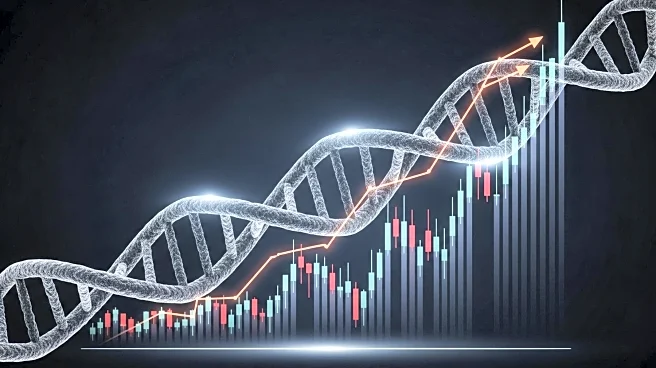What's Happening?
The global anti fungal drugs market is projected to grow at a compound annual growth rate (CAGR) of 3.5% from 2025 to 2032, reaching a valuation of USD 19.08 billion by the end of the period. This growth is driven by the increasing incidence of fungal infections, particularly among immunocompromised patients. Advances in drug formulations and diagnostic technologies are enhancing treatment efficacy and patient outcomes. Azoles are expected to remain a dominant drug type, accounting for 29% of the market share by 2025. North America is anticipated to lead the market, capturing over one-third of the global share, while the Asia Pacific region is expected to offer significant growth opportunities.
Why It's Important?
The rising prevalence of fungal infections, such as aspergillosis and candidiasis, is a major driver of the anti fungal drugs market. The global burden of these infections is increasing, with invasive fungal infections affecting approximately 6.5 million people annually. This trend underscores the need for effective antifungal treatments. However, the market faces challenges such as high treatment costs and potential side effects, which may limit accessibility and demand, particularly in low- and middle-income countries. Despite these challenges, ongoing research and development are paving the way for novel antifungal agents with improved efficacy and safety profiles, potentially transforming treatment protocols and expanding market opportunities.
What's Next?
The development of combination antifungal therapies is gaining momentum, aiming to enhance treatment efficacy and reduce resistance. Innovations such as combining echinocandins with azoles have shown synergistic effects against certain infections. Additionally, increased awareness and diagnostic rates are expected to boost demand for antifungal drugs. Government and private funding are also on the rise to combat antifungal resistance, with significant investments being made in research and development. These efforts are likely to drive further growth in the antifungal drugs market, creating new opportunities for manufacturers and healthcare providers.
Beyond the Headlines
The antifungal drugs market is witnessing a shift towards more proactive healthcare approaches, with early detection and treatment becoming increasingly prioritized. New diagnostic methods, such as molecular and quick antigen tests, are enabling earlier and more accurate detection of fungal infections. This shift is expected to increase the demand for antifungal drugs, as timely treatment can significantly improve patient outcomes. Furthermore, the market is responding to the global antifungal resistance crisis, with the development of drugs targeting resistant 'superbugs' becoming a critical focus. These developments highlight the market's potential to address significant public health challenges.










